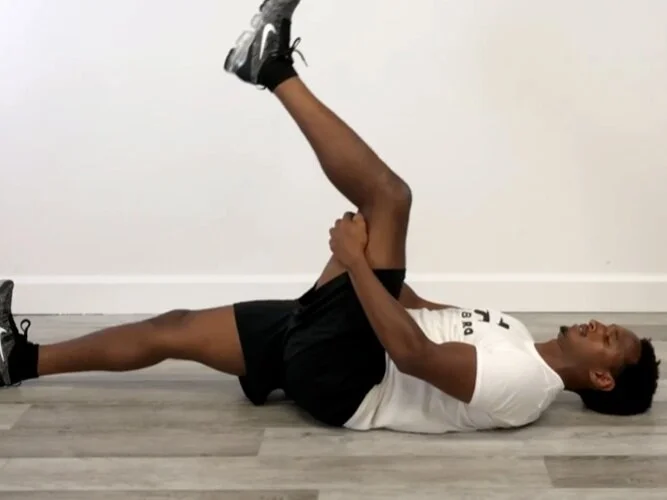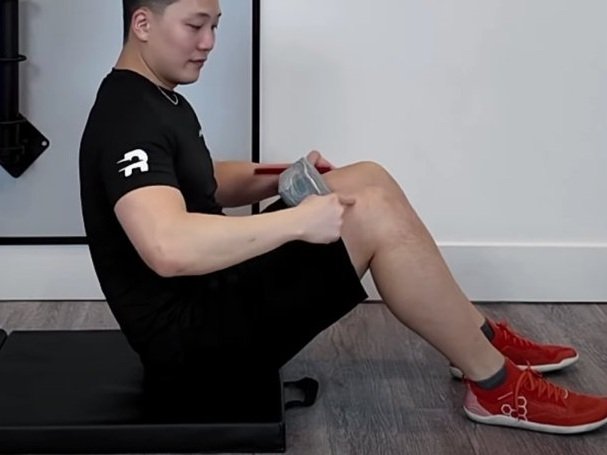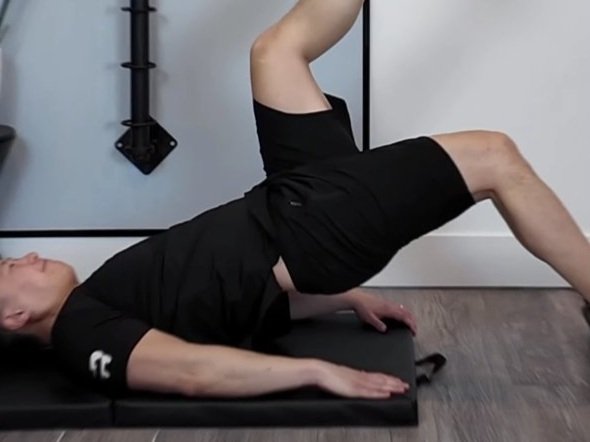Prepatellar Bursitis
What is Prepatellar Bursitis?
Learn about how this condition may be related to your knee pain.
What is Prepatellar Bursitis?
In the body there are sacs of fluid called bursa that are used as gliding surfaces or as a cushion to reduce frictional forces between layers of your tissues. In the knee, there is a bursa called the prepatellar bursa which is located superficial to the knee cap. When inflamed, this bursa can swell up, produce pain, and is called prepatellar bursitis.
Who is usually affected by Prepatellar Bursitis?
Prepatellar bursitis is typically caused by repetitive or acute trauma. This condition is common in football players, wrestlers, basketball players due to the repetitive nature of their sport and the likelihood of athletes to experience acute trauma from falls or collisions. This condition is also common in miners, carpet/floor laying industries, and cleaning/custodial businesses due to the repetitive contact their knees need to make with other surfaces.
This condition typically has a 10% recurrence rate and is more common with repetitive contact with turf, wrestling mats, hardwood floor, or exercise mats.
How does Prepatellar Bursitis occur?
When irritated, chronic inflammation leads to fluid production and increased fluid permeability. This allows fluid and proteinaceous exudates to flow into the bursa. Local cells also multiply and produce collagen leading to bursal wall thickening over time. This will form scar tissue that can feel like joint mice and limit knee range of motion and cause pain. Calcium deposits can then occur in some joints, but this is very uncommon.
What can prepatellar bursitis mimic?
Differential diagnosis include:
Xanthomas
Ganglion cysts
Depositions of amyloid, uric acid crystals, or calcium pyrophosphate crystals
Infection
Infections must be ruled out prior to conservative treatment. You may be referred for blood tests by your medical team to rule out infection.
What are the different types of prepatellar bursitis?
There are 3 main types of prepatellar bursitis. They are acute bursitis, chronic non-septic bursitis, and inflamed or septic bursitis.
Acute Bursitis
Acute bursitis is often a result of an acute injury. During the physical examination, your health care provide may notice swelling over several hours, tenderness and warmth, and swelling that may cover the knee. Rapid swelling is indicative of getting additional diagnostic tests such as radiographs to rule out fracture.
Acute bursitis is often treated with an elastic bandage compression, ice, NSAIDS, rest (immobilization for 1 week), and joint aspiration (wrestlers) in the short term to reduce swelling and pain. Generally steroid injections are not recommended. Immobilization is required to prevent recurrence and progression to chronicity (but has poor patient compliance). Long term treatments include rehabilitative exercises and pain control modalities.
Chronic Non-septic Bursitis
Chronic non-septic bursitis is usually a result of a repetitive overuse injury. Physical examination findings include chronic swelling but without inflammation or pain, no redness or heat, and no restricted movements. Often patients will seek care for the swelling.
Chronic bursitis is often treated with a knee pad, ice, NSAIDS, and avoidance of aggravating activities to reduce short term symptoms. This condition is considered to be self-limiting meaning that it’ll naturally heal on its own. Participating in physiotherapy may provide additional help to address compensational movements developed during the recovery process.
Inflamed or Septic Bursitis
Clinically it is hard to differentiate between aseptic and septic bursitis. About 50% of non-septic bursitis have increased bursal warmth and 45% of aseptic bursitis had tenderness (both of which are indicators of infection or acute trauma). To add to the confusion, septic bursitis may or may not have elevated temperatures, varying from 15-85% in the literature.
Due to these hard to evaluate clinical findings, an accurate diagnosis may require bursal aspiration to look for white blood cell count, gram stain, and culture (most commonly due to staphylococci - 90% S. Aureus, and streptococci - 9% B-hemolytic streptococci).
Since this diagnosis is due to bacterial infection, it is treated with antibiotics, on top of regular bursitis treatment.
What is the best treatment for prepatellar bursitis?
Generally conservative therapy is most effective form of treatment as long as the bursa is not infected with bacteria. Conservative therapy include all treatments that do not require surgical intervention. In addition to the aforementioned treatments, conservative therapy includes treatments from a physiotherapist, chiropractor, massage therapist or acupuncturist. All disciplines of treatment may combine manual therapy with exercise prescription for both short and long term relief. If you are in Markham and would like to book in with a Rehab Hero therapist click the button below:
Exercises for prepatellar bursitis
Exercises will vary from individual to individual but will generally have an initial focus on improving pain free non-weight bearing range of motion. Exercises that engage both the quadriceps and hamstrings are generally used to reduce de-conditioning of muscles and to reduce swelling. Examples of beginner exercises include the:
For additional exercises specific to your limitations contact your local physiotherapist or chiropractor. To book in with a qualified Rehab Hero clinician use the button below:
Written By:
Dr. David Song, Chiropractor, Rehab Coach
References
Reid C, Bush P, Cummings N, McMullin D, Durrani S. A Review of Occupational Knee Disorders. Journal Of Occupational Rehabilitation [serial on the Internet]. (2010, Dec), [cited May 14, 2018]; 20(4): 489-501. Available from: SPORTDiscus with Full Text.
McFarland E, Mamanee P, Queale W, Cosgarea A. Olecranon and prepatellar bursitis: treating acute, chronic, and inflamed. / Le traitement des bursites retro-olecraniennes et des periarthrites du genou aigues, chroniques ou en cas d'inflammation. Physician & Sportsmedicine [serial on the Internet]. (2000, Mar), [cited May 14, 2018]; 28(3): 40-42;45-46;51-52. Available from: SPORTDiscus with Full Text.
























